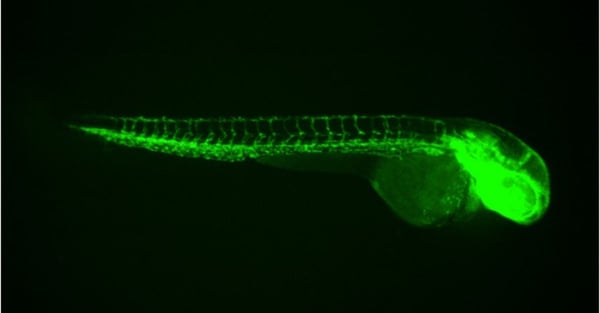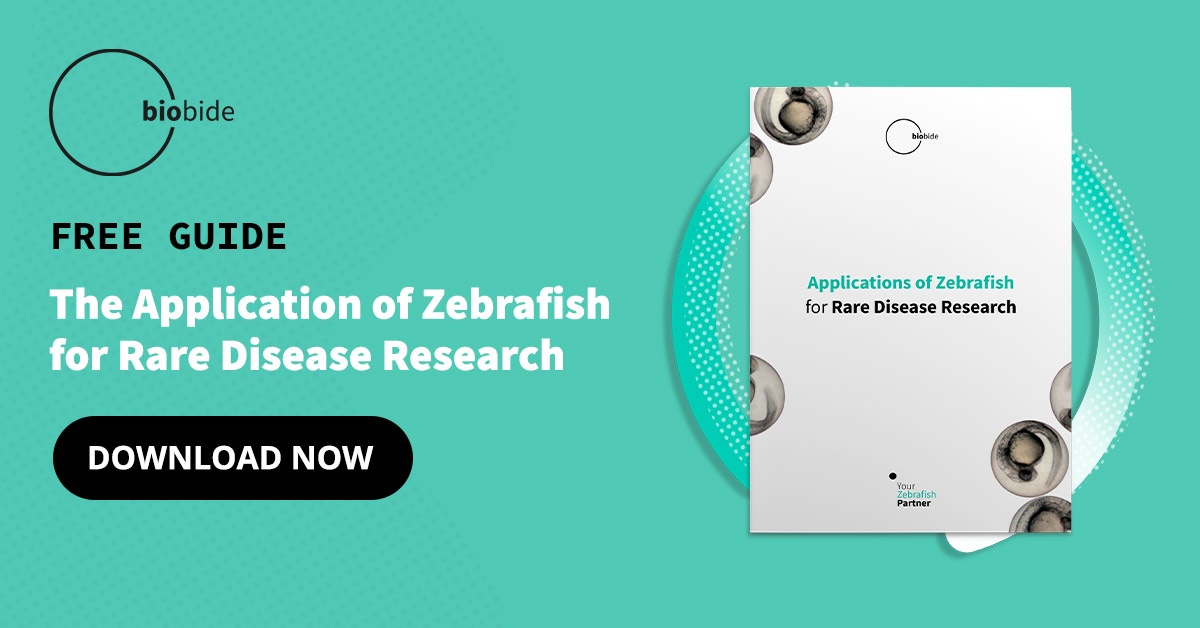Modern Drug Discovery and development uses a wide variety of cutting-edge tools and scientific technologies. Genetic engineering performed with Clustered Regularly Interspaced Short Palindromic Repeats (CRISPR) is a prominent example of the impact new discoveries can have on the pharmaceutical industry. Generating transgenic animal models in biomedical research has become an important part of the Drug Discovery process, allowing scientists to more effectively look into new treatments and diseases.
Transgenic animal models like green fluorescent protein (GFP) Zebrafish allow for new research on diseases and treatments at the earliest stages of Drug Discovery.
Recreating genetic disorders or harmful diseases within a controlled laboratory environment is at the core of early Drug Discovery. With homologous animal models like Zebrafish, scientists can quickly and safely identify potentially beneficial molecules and chemical compounds.

What are Transgenic Animal Models in Biomedical Research
Model organisms and their contributions to science are an important part of Drug Discovery research and development. The complexities of the full biological system include a staggering number of variables that could affect a potentially promising therapeutic hit.
The step from theoretical compounds and molecular equations to in vivo animal models is a key part of the Drug Discovery process. Seeing how diseases and new drugs function in the real world – even a laboratory-controlled real-world – provides valuable insight that would be impossible to gather without living organisms.
Transgenesis provides a way for scientists to develop more effective animal models, relying on gene silencing, CRISPR, and other genetic engineering tools to ensure the organisms are acting as proper stand-ins for humans. Transgenic animal models in biomedical research help build a better understanding of new diseases, working towards better treatments and cures for affected patients as the Drug Discovery process continues.
Mutations and Analysis with Transgenic Models
When it comes to transgenic animal models in biomedical research there are two main types that are commonly used in Drug Discovery.
Mutations
Animal models with completely sequenced genomes make it possible to easily modify and edit DNA in order to meet the needs of various tests and assays. In the case of Zebrafish, there are already more than 14,000 established mutations readily available for use in Drug Discovery and other scientific research.
Analyze cells and pathways
Rather than completely manipulating or modifying DNA, transgenic animal models in biomedical research can also be used to analyze cells and pathways as a part of gathering data in preclinical studies. For example, GFP Zebrafish are commonly used in image analysis, allowing for quick and easy tests and assays in early Drug Discovery.
GFP Zebrafish are genetically modified alternative animal models designed to glow when exposed to specific stimuli.
In practice, transgenic animal models in biomedical research can translate into simple non-invasive large-scale testing. Relying on a model like GFP Zebrafish allows for a better understanding of how new diseases and new treatments interact with the full biological system.
Transgenic Zebrafish in Biomedical Research
Transgenic animal models in biomedical research help refine the scope of experiments and further focus on the details of the results. As an example, model organisms like GFP Zebrafish create a clearer picture of how diseases and their treatments could eventually impact the lives of future human patients.
Zebrafish represent a great opportunity for Drug Discovery, sharing an evolutionary history and over 80% of their disease gene DNA with humans. Transgenic models like GFP Zebrafish make studying specific human diseases a simpler process.
As an added bonus, the natural behavior of the small vertebrate fish fits in well with laboratory conditions. The highly adaptable schooling fish produce hundreds of eggs that develop in less than a week and mature in transparent embryos. Even before any genetic engineering, Danio Rerio are adapted to easy, non-invasive testing and observations of developmental variables and processes.
Transgenic animal models provide the reliable, repeatable, and verifiable data needed for effective preclinical studies in early Drug Discovery.
The steps from identifying a hit and beginning preclinical studies to passing the FDA drug approval process and entering the market can be long and complex. Starting preclinical studies with transgenic Zebrafish means gathering verifiable and reliable data on toxicity, safety, and efficacy as early as possible.
Alternative animal models like Zebrafish help simplify the complex process of drug development, giving researchers one less thing to worry about and easing the transition into clinical trials.





